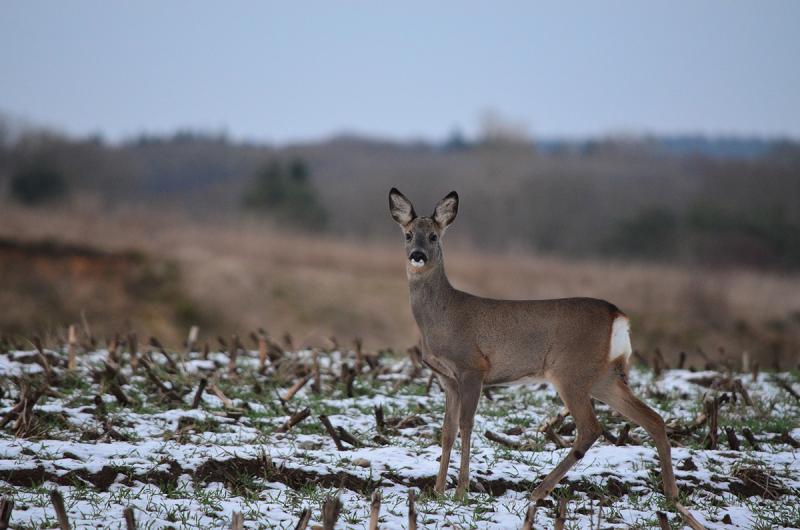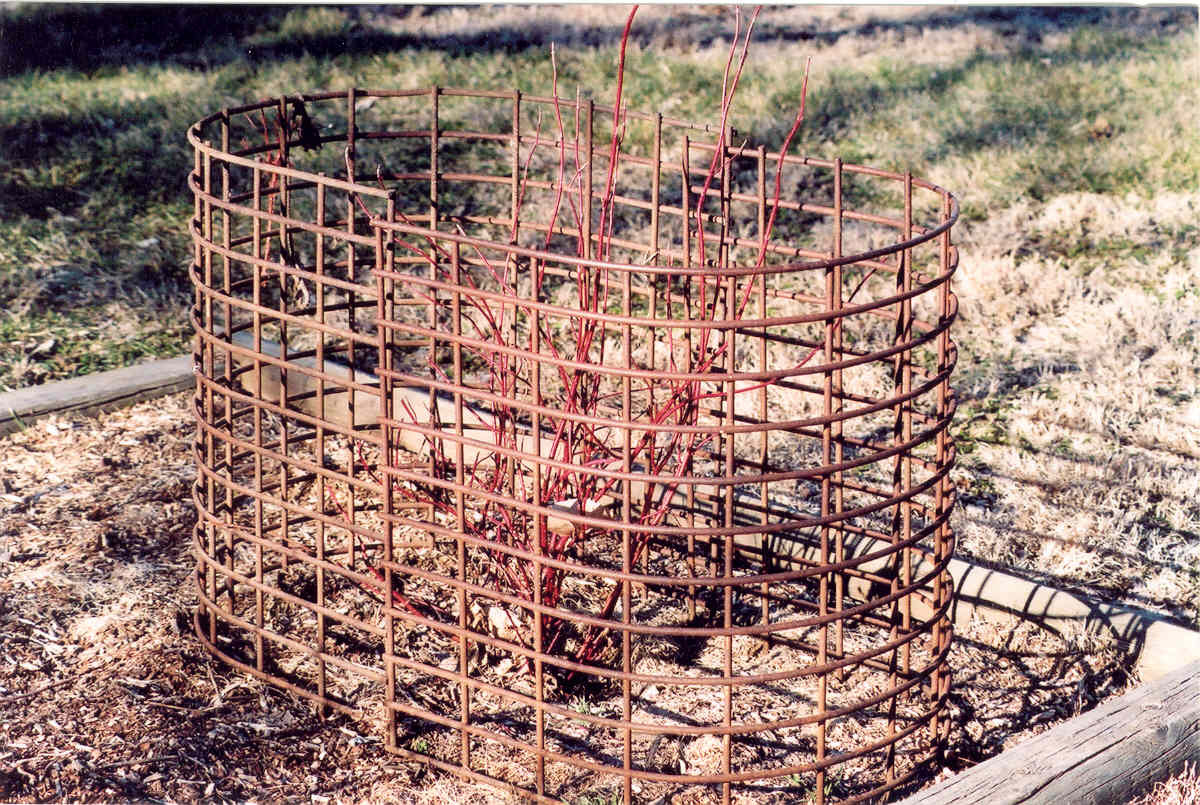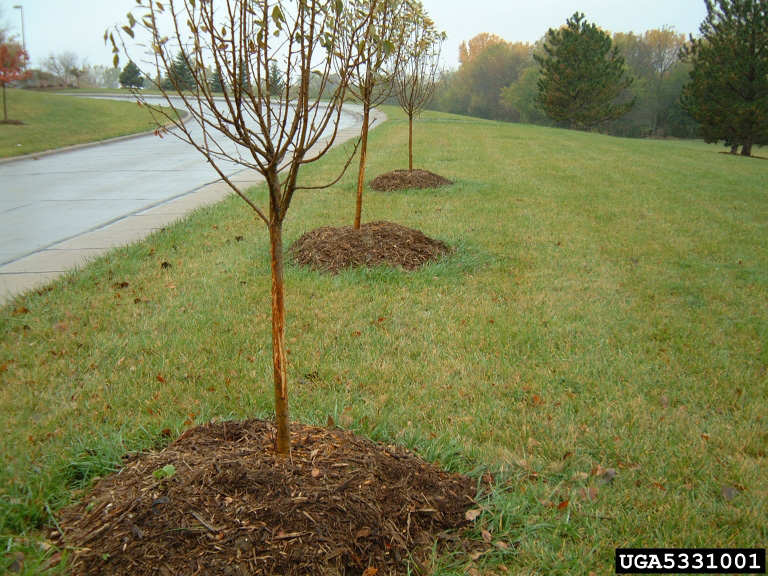
Wildlife damage on woody landscape plants is very common, particularly in winter when cold weather and declining food resources make our landscape plants look pretty tasty! Common culprits include rabbits, voles and deer.
Today, we’re going to focus on preventing deer damage, but for more information on minimizing the impact of rabbits and voles, check out “4 Fall Season Tips for Living with Wildlife”.
 Swap It Out or Cage It In;
Swap It Out or Cage It In;
If only a few plants in your landscape suffer from deer feeding, you might consider swapping them out for less attractive plant species. Plants frequently damaged severely include arborvitae, azaleas, Cornelian dogwood, burning bush (Euonymus alatas), fir, fruit trees (apple, cherry, plum), hybrid tea roses, Norway maple, redbud, rhododendrons, wintercreeper (Euonymus fortunei) and yews.
Check out Landscape "Plants Rated by Deer Resistance" from Rutgers University for a good listing of many landscape plants and their varied attractiveness as a food source for deer.
 Small trees or plants can be protected with a cage of wire mesh, making sure it is tall enough to prevent deer from reaching over the top or pushing their snout through the wire openings. Anchor the cage as needed to keep it in place.
Small trees or plants can be protected with a cage of wire mesh, making sure it is tall enough to prevent deer from reaching over the top or pushing their snout through the wire openings. Anchor the cage as needed to keep it in place.
Deer antler rub damage occurs during the fall breeding season, October through January, with a peak in November. As males rub the dried velvet from their antlers, they frequently damage tree trunks. Protect small or young trees with plastic tree wrap products, slit drain tile or a woven-wire cylinder making sure the protection goes at least four feet up the trunk on taller trees.
Repellents
Effective control with repellents is variable – sometimes they work and sometimes they don’t. But if you only have a few plants to protect or don’t want to put up a fence to keep the deer out, they’re worth a try. Just keep in mind, the repellent won’t eliminate all damage, especially during difficult winter conditions, but it may help keep damage to a minimum.
To be effective, taste repellents must be applied directly to the plants being protected. Deer need to get the repellent in their mouth to be discouraged from further feeding. Taste repellents include putrescent whole egg solids and capsaicin, along with other active ingredients. But keep in mind, taste repellents should not be applied to edible plants during the growing season after fruit set.
Putrescent egg solids, basically decomposing eggs, emit a sulfur-like odor thought to mimic the smell of predator urine and discourage deer activity. It functions as both a taste and scent repellent.
Scent repellents, like dried blood and garlic, don’t have to be ingested to be effective so can be applied on or around the plants to be protected.
Several repellents are commonly available in garden or big box stores, such as the following.
- Natures MACE – Deer & Rabbit Mace contains dried blood, putrescent whole egg solids, garlic and peppermint oil which serve as both smell and taste repellents. It’s labeled for use in gardens, lawns and landscapes. Reapplication is recommended every 3-4 weeks.
- Bonide Go Away – Deer & Rabbit Repellent contains capsaicin, a hot pepper taste repellent. It’s labeled for use on fruits, vegetables, citrus, ornamentals and grasses. Reapplication is recommended every 3-7 days for 2-3 weeks, until control is established.
- Safer Critter Ridder – Deer & Rabbit Repellent contains putrescent whole egg solids, capsaicin and garlic, acting as a taste and smell repellent. It’s labeled for use in gardens, lawns and landscapes. Reapplication is recommended every 90 days
Fence Them Out
Where deer are abundant and there are many plants or a large area to protect - the home orchard, for example - fencing may be the only way to effectively minimize damage. Several fencing designs are available to meet specific needs. Temporary electric fences are simple and inexpensive, but useful in protecting garden and orchards during snow-free periods.
Deer are attracted to the fence by scent, such as peanut butter lures, and receive a shock when they touch the electrified wire with their nose. Deer learn quickly to avoid this unpleasant surprise and the fenced area. For the best control and least amount of plant damage, install fencing at the first sign of damage. This prevents deer from establishing feeding patterns on your plants. Inspect the fence weekly to keep it in good working order.
A simple one-wire peanut butter fence is effective for small gardens, nurseries, and orchards (up to 3-4 acres) subject to moderate deer pressure. For details on the this and other fence designs, visit Prevention and Control of Wildlife Damage – Deer.
Reference to commercial products or trade names is made with the understanding that no discrimination is intended and no endorsement by Nebraska Extension is implied. Use of commercial and trade names does not imply approval or constitute endorsement by Nebraska Extension. Nor does it imply discrimination against other similar products.
Images
- Small trees or plants can be protected with a cage of wire mesh, but the cage must be tall enough to prevent deer from reaching over the top. Image used with permission from homeowner.
- Deer rub damage in an urban environment. Several trees along the church drive were damaged by deer. The church adjoins a small creek and some agricultural land. Deer are common in the area. Dave Mooter, Prairie Silvics, Inc. Bugwood.org.